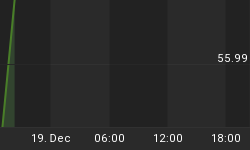While the oil spill from a sunken drilling rig in the Gulf of Mexico threatens to become an environmental disaster, plans are proceeding for opening up new drilling territories in the iceberg-infested waters off Greenland.
The island, an autonomous territory under Danish sovereignty, this week conducted an auction for 14 blocks in Baffin Bay, off the northwest coast of Greenland near Canadian territorial waters. Results will be announced in August.
In the meantime, Cairn Energy will this summer begin drilling off Disko Island in Baffin Bay on the basis of leases awarded in earlier auctions. Exxon Mobil and Chevron also hold existing leases, while Royal Dutch Shell and Norway's Statoil were among the bidders in this week's auctions.
The U.S. Geological Survey has estimated that some 50 billion barrels of oil may be found offshore Greenland, where ice covers four-fifths of the surface territory for a good part of the year. Some in Greenland, which has a population of only 57,000, hope that oil will be the ticket to independence from Denmark, which has controlled the island since the 18th century.
The portion of the Labrador Current flowing through Davis Strait off western Greenland is known as "iceberg alley" because huge chunks of ice that calve from the northern glaciers make their way into the northern Atlantic along this route.
Ironically, global warming, which has melted some of the Arctic glaciers, has made offshore drilling in these waters more feasible.
However, the Gulf oil spill is raising concerns in Canada about the risks posed in drilling so near the Canadian coastline. Cairn Energy's only offshore drilling experience has been in the much warmer Indian Ocean, and no one has had to cope with an oil spill in Arctic waters.
Officials from eight Arctic countries, including Canada, are to meet in Greenland next month to discuss possible environmental risks of oil exploration and production in the region. Last fall, seven companies with drilling licenses, including Cairn, formed the Greenland Oil Industry Association to exchange expertise and liaise with the government on environmental and other issues.
Analysts estimate that an oil price of at least $50 a barrel is necessary to make Arctic offshore drilling worthwhile. Prices have hovered around $80 a barrel in recent months.
By Darrell Delamaide for Oilprice.com who offer detailed analysis on Crude oil, Geopolitics, Gold and Renewable Energy. They also provide free political and economic intelligence to help investors gain a greater understanding of world events and the impact they have on certain regions and sectors. Visit: http://www.oilprice.com
















